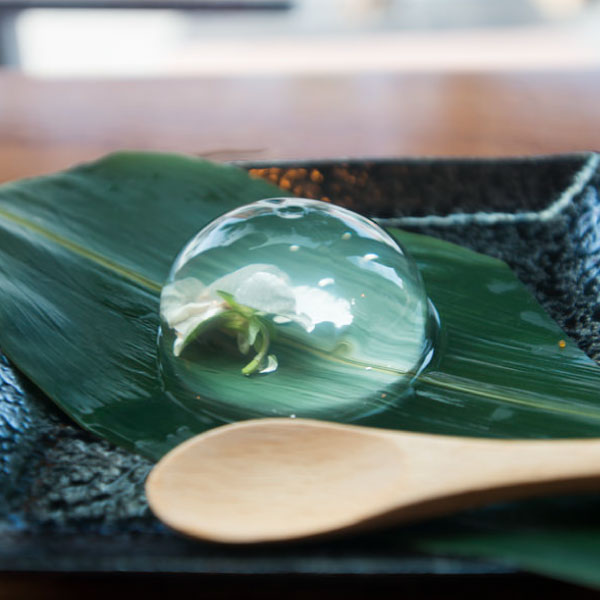As we approach a new year, it’s time to start forecasting the food trends of 2017! However, what about the predicted trends of 2016? How accurate were the lists of would-be big hits?
It’s easy to mistake a food trend for a food fad, especially in the midst of a cultural feeding frenzy fueled by Instagram and Pinterest. However, a trend represents an actual change in consumer food habits, while a fad will go the way of Crystal Pepsi in a few months.
With this reality in mind, let’s examine five big food trend misses of 2016:
1. Raindrop Cake

Also known as water cake or Mizu Shingen Mochi, this Japanese import is a delicate mixture of mineral water and agar. Introduced to America by New York chef Darren Wong, raindrop cake is calorie-free, gluten-free, and vegan. The dessert possesses the texture of water, in a surreal drop-like shape. It looks breathtaking.
In 2015, Nerdist declared water cake the future of dessert. In 2016, Delish said it was one of the top 30 food trends of the year. Huffington Post wondered if raindrop cake would be the next cronut.
The cronut comparison is actually quite accurate. According to Google Trends, the interest in raindrop cake follows the classic rise and fall of a fad. In March 2016, discussion of the new dessert began to rise. Then, an explosion: the graph reaches peak interest by the middle of April. However, by the end of that month, there’s a steep fall. The graph reveals a steady drop in interest ever since. It seems that raindrop cake was just a drop in the pan.
2. Chlorophyll Extract

Bon Appetit asserted that chlorophyll extract would be one of the top healthy food trends of 2016. However, chlorophyll is nothing new. Foods rich in chlorophyll, like leafy greens, have long been recommended as part of a healthy diet. The extract isn’t new either.
According to Google Trends, chlorophyll extract’s popularity has been fairly consistent over the last few years. Interest in it is cyclical, involving large bursts every few months, followed by heavy falloffs. While there was indeed a burst of interest in early 2016, when Bon Appetit wrote the article, the biggest spike actually came back in 2012.
What has changed is the level of visual exposure chlorophyll extract now has. While the extract doesn’t have a strong flavor, the deep green hue makes for photogenic dishes. It’s perfect for foodie “Instabait” — visually striking dishes that diners can’t help but click and post. Unfortunately, as a new food trend, this was a bust.
3. No-tip Restaurants
Thrillist pointed to no-tip restaurants as a hipster food trend of 2016, but it didn’t exactly catch fire.
There’s been growing buzz around no-tipping restaurants for years. The idea is admirable, as restaurateur Danny Meyer explains on Freakonomics. The basic concept is to close restaurant income gaps by eliminating tips, raising prices, and redistributing wealth between front-of-house and back-of-house employees.
The trend seemed ready to explode once Joe’s Crab Shack rolled out a no-tipping experiment in 18 locations. Three months later, the chain back-peddled. As NPR and The Atlantic report, the trend has begun to lose steam, as some restaurants reverse no-tipping policies.
Apparently, American consumers like, and want, to tip. Food prices in no-tip restaurants must also be raised 21% – 40%, which can cause sticker shock. Furthermore, some no-tip restaurants have had difficulty holding on to servers, who jump ship for tipping establishments. We’ll see what the future has in store, but, in 2016, no-tipping restaurants were a bust.
4. Poke

The summer of 2016 saw an explosion of poke. The Eater predicted that poke was a summer trend that had staying power. Unfortunately, there are some signs to the contrary.
That’s not to say that poke will disappear. Native to Hawaii, poke has existed in its current form since at least the 70s, but has roots that go back centuries. There’s no doubt that poke will continue to have a presence for centuries to come. However, the burst of nationwide popularity during the summer of 2016 has many of the signs of a fad. First, there’s the foreboding trend curve. In the month of July, there was a huge interest boom, with very little build up from June. Then there was a rapid fall in August. By the end of September, interest had largely returned to pre-boom levels.
This trendy food also has an issue with sustainability. Part of poke’s popularity comes from its perceived affordability, which has caused some poke restaurants to eat costs. The seafood industry is not in a stable place, with demand for fish rising, as global production reaches its sustainable limit. If restaurants are forced to raise prices due to seafood costs, poke’s popularity may wane further.
5. Pokemon

Delish referred to Pokemon-inspired dishes as one of the top 30 food trends of 2016. In July and August, Pokemon Go consumed the country in a PokeCraze. Google Trends shows how even the food and beverage industry wasn’t immune to its popularity.
Overnight, restaurants jostled to turn themselves into PokeStops. Pokemon pop-up shops, serving Pikachu-themed food, appeared. Moreover, Pokemon-themed snacks, like Pika-eggs and Pika-cake pops, stormed the web.
However, like all food fads, interest dropped fast. By the end of September, interest largely died down. While Pokemon Go may still be making two million dollars a day, its culinary influence has waned.
The foodie world is as fickle as fashion. No one really knows what will become a true trend. Countless fads pop in and out of popularity, while hordes of people race to the next “it” thing.
It’s difficult to look past hype. However, there are a few indicators that show the staying power and growth potential a food trend may have.
1. Accessibility
If a trend is accessible to a majority of people, then it has the ability to reach beyond the regional or economic pocket it started in.
2. Sustainability
A trend can’t be dependent on volatile resources, or else it’s prone to a sudden collapse.
3. Autonomy
Finally, a trend needs to be autonomous from other fads, so that a drop of interest in one doesn’t lead to a drop of interest in the other.
So, as we approach a new year, and the lists of food trends to look out for in 2017 begin to proliferate, let’s not get swept up by hype. Rather, let’s judge these predictions with a clear head. Fads are fun, but trends are future.











